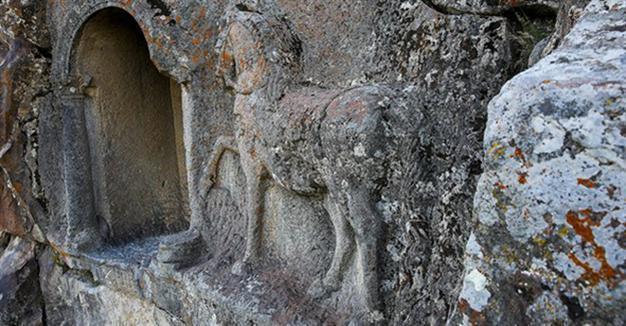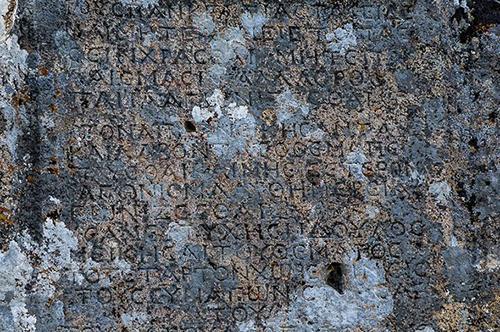Horseracing rules found on 2,000-year-old tablet in central Turkey
KONYA – Anadolu Agency

Horseracing rules written on a 2,000-year-old tablet were uncovered in the Beyşehir district of the Central Anatolian province of Konya on May 2.
The tablet, which is part of the Lukuyanus Monument, was apparently built to honor a jockey named Lukuyanus, who died at an early age in the Pisidia era.
Professor Hasan Bahar from Selçuk University’s History Department said the tablet was found at the site of an ancient hippodrome.
“This place was the site of a hippodrome. This tablet refers to a Roman jockey named Lukuyanus. From this tablet we can better understand that horse races and horse breeding were done in this area,” Bahar said, adding that the Hittites built such monuments for the surrounding mountains, which they believed were holy.

“There are horseracing rules on the tablet. It says that if a horse comes in first place in a race it cannot participate in other races, while another horse of the winning horse’s owner also cannot enter another race. In this way, others were given a chance to win. This was a beautiful rule, showing that unlike races in the modern world, races back then were based on gentlemanly conduct,” Bahar also said.

“I’ve never seen a similar tablet that contains the rules of sports and the way the race is carried out. There are sources that mention horseracing but there weren’t any that described the rules. We can say that this tablet is the oldest one describing the rules of horse racing,” he said.
 Horseracing rules written on a 2,000-year-old tablet were uncovered in the Beyşehir district of the Central Anatolian province of Konya on May 2.
Horseracing rules written on a 2,000-year-old tablet were uncovered in the Beyşehir district of the Central Anatolian province of Konya on May 2. 
